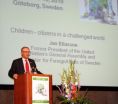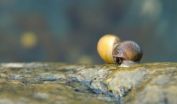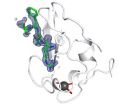(Press-News.org) David H. Adams, MD, Marie-Josée and Henry R. Kravis Professor and Chairman of the Department of Cardiothoracic Surgery at The Mount Sinai Medical Center, has performed the first implantation of the Medtronic Tri-Ad Semi-Flexible Tricuspid Annuloplasty Ring in the United States. Dr. Adams invented the ring, which was recently approved by the Food and Drug Administration.
The tricuspid valve lies between the right atrium and right ventricle of the heart. Tricuspid valve regurgitation occurs when the valve does not close completely and blood leaks back into the right atrium of the heart. If left untreated, tricuspid valve regurgitation can lead to debilitating symptoms including congestive heart failure and irreversible heart damage. Both American and European guidelines for heart valve disease management now emphasize the importance of treating the diseased tricuspid valve at the time of mitral valve surgery.
"Our understanding of the complex 3-dimensional nature of the tricuspid valve in normal and diseased states has progressed over the past several years due to advances in imaging," said Dr. Adams. "We have translated this knowledge into a new concept in tricuspid ring design that combines the characteristics of the currently available tricuspid rings, which up until now have been completely rigid or completely flexible. The Tri-Ad ring has a rigid component to optimally correct the main lesion seen in tricuspid regurgitation, in combination with completely flexible sections to protect delicate tissue while the valve and heart changes its 3-dimensional shapes throughout the cardiac cycle."
Until recently, "surgical abstention" has been the norm in dealing with functional tricuspid regurgitation, with the assumption that tricuspid regurgitation should resolve once the primary cause—typically mitral stenosis or regurgitation—is eliminated. Annuloplasty rings are specially designed to help restore the tricuspid valve to its normal size and shape—the valve is often enlarged or distorted in a diseased state.
"We also increased the open side of the new ring to better accommodate the heart's conduction system, which is intimately associated with the tricuspid valve. So in addition to a more advanced physiologic repair concept, the Tri-Ad ring design will also protect against damage to the electrical system of the heart," said Dr. Adams.
INFORMATION:
For pictures of the first implantation and more information, visit http://www.mitralvalverepair.org/triad.
Dr. Adams is a named inventor and receives royalties on heart valve repair rings with Medtronic and Edwards Lifesciences. Dr. Adams is also National Co-Principal Investigator of the upcoming FDA Medtronic-CoreValve Pivotal Trial.
About The Mount Sinai Medical Center
The Mount Sinai Medical Center encompasses both The Mount Sinai Hospital and Mount Sinai School of Medicine. Established in 1968, Mount Sinai School of Medicine is one of few medical schools embedded in a hospital in the United States. It has more than 3,400 faculty in 32 departments and 15 institutes, and ranks among the top 20 medical schools both in National Institute of Health funding and by U.S. News & World Report. The school received the 2009 Spencer Foreman Award for Outstanding Community Service from the Association of American Medical Colleges.
The Mount Sinai Hospital, founded in 1852, is a 1,171-bed tertiary- and quaternary-care teaching facility and one of the nation's oldest, largest and most-respected voluntary hospitals. In 2009, U.S. News & World Report ranked The Mount Sinai Hospital among the nation's top 20 hospitals based on reputation, patient safety, and other patient-care factors. Nearly 60,000 people were treated at Mount Sinai as inpatients last year, and approximately 530,000 outpatient visits took place.
For more information, visit www.mountsinai.org. Follow us on Twitter @mountsinainyc.
Mount Sinai performs first tricuspid ring implantation
2010-09-13
ELSE PRESS RELEASES FROM THIS DATE:
Good long-term results for fusion surgery for high-grade spondylolisthesis
2010-09-13
A group of children who underwent fusion surgery for spondylolisthesis in the lumbar spine 30 years ago showed a clear reduction in back pain when followed up seven years later. A new study of these patients as adults has found that the benefits have lasted, reveals research from the Sahlgrenska Academy and Sahlgrenska University Hospital presented this week at the International Society of Orthopaedic Surgery and Traumatology (SICOT) annual international conference in Gothenburg.
Spondylolisthesis (forward displacement of a vertebra) in the lumbar spine occurs in 6% ...
Bone-anchored leg prostheses improve quality of life
2010-09-13
Today sees the presentation of a study that, for the first time, shows the results of treatment using prostheses attached to titanium implants in the bones of patients with above-the-knee amputations. It reveals that the treatment improves function and quality of life in nine out of ten patients, and is the result of research carried out at the Sahlgrenska Academy and Sahlgrenska University Hospital that is being presented this week at the International Society of Orthopaedic Surgery and Traumatology (SICOT) annual international conference in Gothenburg.
At a symposium ...
Early childhood education important for sustainable development
2010-09-13
Early childhood education can play a key role in relation to change when the world fails to adopt a sustainable approach economically, ecologically and socially.
This was highlighted at the World Congress "Children, citizens in a challenged world", which was hosted by the University of Gothenburg.
In a statement, the congress urges governments around the world to protect children's right to a childhood.
More and more people are realising that work with young children is a force for change in itself, towards creating a different society. Early childhood education has ...
Female marine snails trick amorous males
2010-09-13
Sexual conflict is not only a human phenomenon. Scientists at the University of Gothenburg have shown that females of the rough periwinkle conceal their gender identity in order to avoid excessive copulation.
The females of most species of snail excrete a substance in their mucous trails that enables males to find them more easily, since they can distinguish between trails from females and those from other males. The males follow the mucous trails laid down by females in order to find a partner for mating. However, the females of one of the species studied (Littorina ...
Your body recycling itself -- captured on film
2010-09-13
VIDEO:
This video shows UBR-box recognition of an arginine residue at the beginning of a protein (blue) targeted for degradation. The structural integrity of the UBR box depends on zinc (grey)...
Click here for more information.
Our bodies recycle proteins, the fundamental building blocks that enable cell growth and development. Proteins are made up of a chain of amino acids, and scientists have known since the 1980s that first one in the chain determines the lifetime ...
How football playing robots have the future of artificial intelligence at their feet
2010-09-13
The new Premier League season has begun and in Madrid the World Cup celebrations are barely over, yet according to research in WIREs Cognitive Science the world's best players may soon be facing a new challenge from football playing robots, which their creators claim will be able to play and beat a human team. The research reveals how building robots to play football is driving the development of artificial intelligence and robotic technology which can be used for roles including search and rescue and home help.
The author, Claude Sammut, from the ARC Centre of Excellence ...
Breakthrough in drug trial offers hope for heart attack patients
2010-09-13
New findings from a major drug trial have brought experts a step closer to developing a drug which could prevent thousands of British deaths from heart attacks.
Dr Robert Storey, Reader at the University of Sheffield and Consultant Cardiologist at Sheffield Teaching Hospitals, was the UK lead for international trials of a new drug, ticagrelor, which have been taking place over the last six years.
The new findings from one of these studies, the ONSET/OFFSET study, revealed that the platelet function in patients taking ticagrelor recovered much quicker after the drug ...
Brain stimulation can help partially paralyzed stroke patients regain use of their muscles
2010-09-13
Stroke patients who were left partially paralysed found that their condition improved after they received a simple and non-invasive method of brain stimulation, according to research in the September issue of the European Journal of Neurology.
Researchers from the Ain Shams University in Cairo, Egypt, studied 60 patients with ischaemic stroke - where the blood supply is reduced to the brain - who had been left with mild to moderate muscle weakness down one side of their body.
Twenty of the randomly assigned treatment group received repetitive transcranial magnetic ...
MIT researchers develop a way to funnel solar energy
2010-09-13
CAMBRIDGE, Mass. - Using carbon nanotubes (hollow tubes of carbon atoms), MIT chemical engineers have found a way to concentrate solar energy 100 times more than a regular photovoltaic cell. Such nanotubes could form antennas that capture and focus light energy, potentially allowing much smaller and more powerful solar arrays.
"Instead of having your whole roof be a photovoltaic cell, you could have little spots that were tiny photovoltaic cells, with antennas that would drive photons into them," says Michael Strano, the Charles and Hilda Roddey Associate Professor of ...
Engineers make artificial skin out of nanowires
2010-09-13
Berkeley – Engineers at the University of California, Berkeley, have developed a pressure-sensitive electronic material from semiconductor nanowires that could one day give new meaning to the term "thin-skinned."
"The idea is to have a material that functions like the human skin, which means incorporating the ability to feel and touch objects," said Ali Javey, associate professor of electrical engineering and computer sciences and head of the UC Berkeley research team developing the artificial skin.
The artificial skin, dubbed "e-skin" by the UC Berkeley researchers, ...




